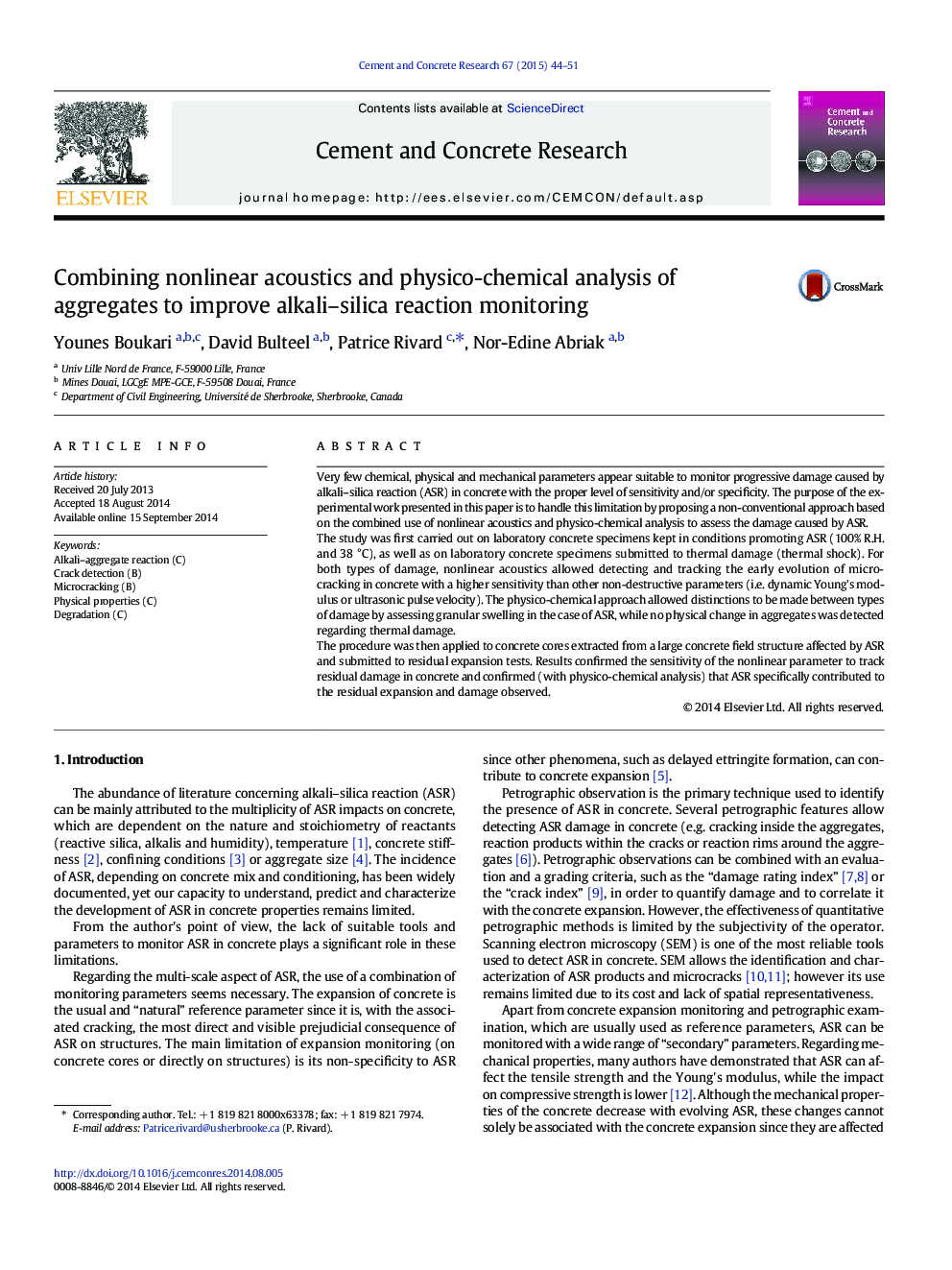| Article ID | Journal | Published Year | Pages | File Type |
|---|---|---|---|---|
| 1456201 | Cement and Concrete Research | 2015 | 8 Pages |
•We showed the benefits of using multi-scale investigations to better characterize ASR.•We confirmed that nonlinear acoustics is very sensitive to concrete damage.•We showed that the physico-chemical analysis is specific to ASR.•Physical–chemical allowed distinguishing ASR-damage from thermal damage.
Very few chemical, physical and mechanical parameters appear suitable to monitor progressive damage caused by alkali–silica reaction (ASR) in concrete with the proper level of sensitivity and/or specificity. The purpose of the experimental work presented in this paper is to handle this limitation by proposing a non-conventional approach based on the combined use of nonlinear acoustics and physico-chemical analysis to assess the damage caused by ASR.The study was first carried out on laboratory concrete specimens kept in conditions promoting ASR (100% R.H. and 38 °C), as well as on laboratory concrete specimens submitted to thermal damage (thermal shock). For both types of damage, nonlinear acoustics allowed detecting and tracking the early evolution of micro-cracking in concrete with a higher sensitivity than other non-destructive parameters (i.e. dynamic Young's modulus or ultrasonic pulse velocity). The physico-chemical approach allowed distinctions to be made between types of damage by assessing granular swelling in the case of ASR, while no physical change in aggregates was detected regarding thermal damage.The procedure was then applied to concrete cores extracted from a large concrete field structure affected by ASR and submitted to residual expansion tests. Results confirmed the sensitivity of the nonlinear parameter to track residual damage in concrete and confirmed (with physico-chemical analysis) that ASR specifically contributed to the residual expansion and damage observed.
